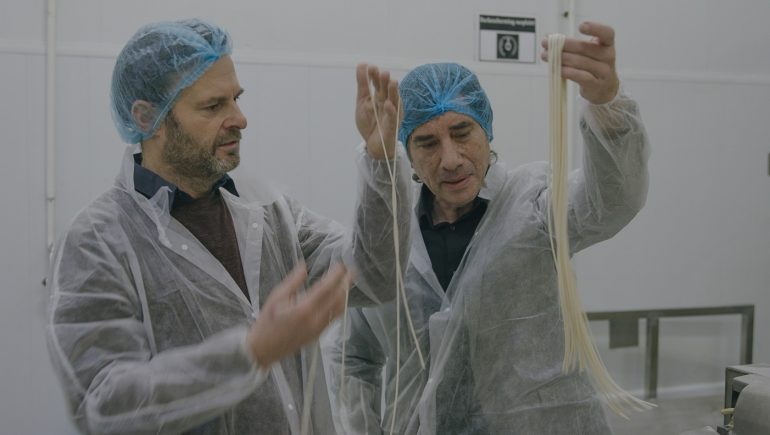Mie is not pasta! Or is it?
The unmasking of mie…
If you cook Chinese, you buy noodles.
If you choose Italian, you grab pasta.
Simple, right?
Well, apparently it’s not that simple!
The sleuths of the Keuringsdienst van Waarde investigate the wonderful world behind our food.
For an episode about pasta and noodles, they settled in the Far East of the Netherlands at Van der Moolen.
So where do you buy that real noodles?
At Hanos, in packs of 250 grams and boxes of 3 kilos under brand name: De Miefabriek and at Albert Heijn, under the name Samasaya with the Oriental products.
What is real noodles?
Presenter Teun has brought several boxes of noodles and pasta.
The ingredients on the Oriental and Italian packaging are almost the same: wheat semolina.
So what’s in those boxes; Pasta or noodles?
Our own Peter explains: authentic noodles are made from wheat flour and water.
This dough mixture is kneaded using an age-old method, folded in half like a harmonica, and then rolled.
The dough is cut into long strings, because a well-known Chinese saying goes: the longer the noodles one eats, the longer one lives.
After hours of drying, the noodles are ready for use.
Pasta is made from wheat semolina.
The types of pasta that we know from the supermarket are not rolled but pressed.
A completely different process.
And it is precisely this product that is sometimes called tagliatelle and other times noodles.
Pretty confusing.
The research team comes to a shocking discovery: the noodles in the supermarket are not noodles, but just pasta in a different jacket….
And it can be even crazier: the noodles we order at the Chinese restaurant are… pasta!
To put it to the test: What is real noodles and what does it taste like?
Time to put it to the test or take the sum.
Let’s wok!
Peter and presenter Teun go into battle.
Peter stir-fries with authentic noodles and Teun stir-fries with noodles… uh pasta.
You can quickly see the difference during preparation.
In Peter’s wok there are thin, airy strings and Teun’s wok is filled with thick strings of noodles that look like pasta.
And, according to Peter, they also taste like pasta.
The denouement follows when Teun tastes both dishes; ‘To be honest, I can taste a world of difference’! The conclusion: noodles in the supermarket are pasta and Oriental dishes are made with authentic noodles.
Watch the entire episode of the Keuringsdienst van Waarde here .

